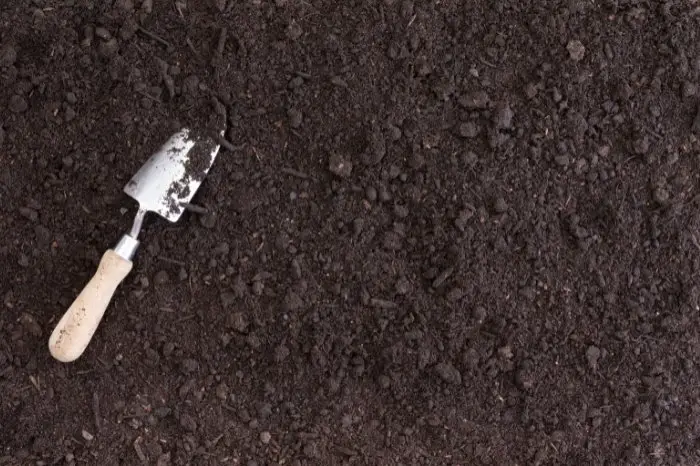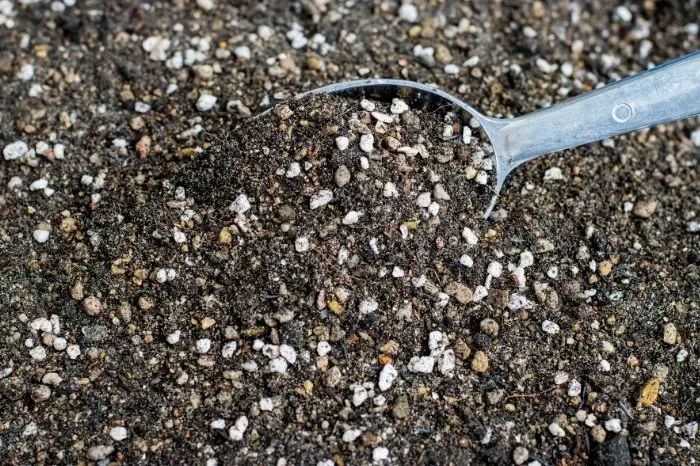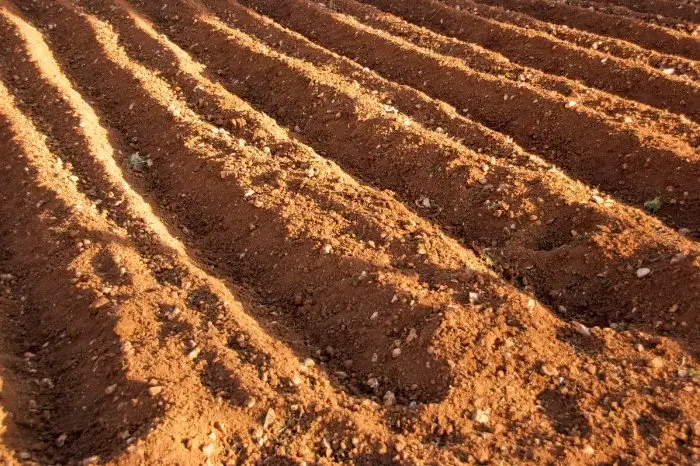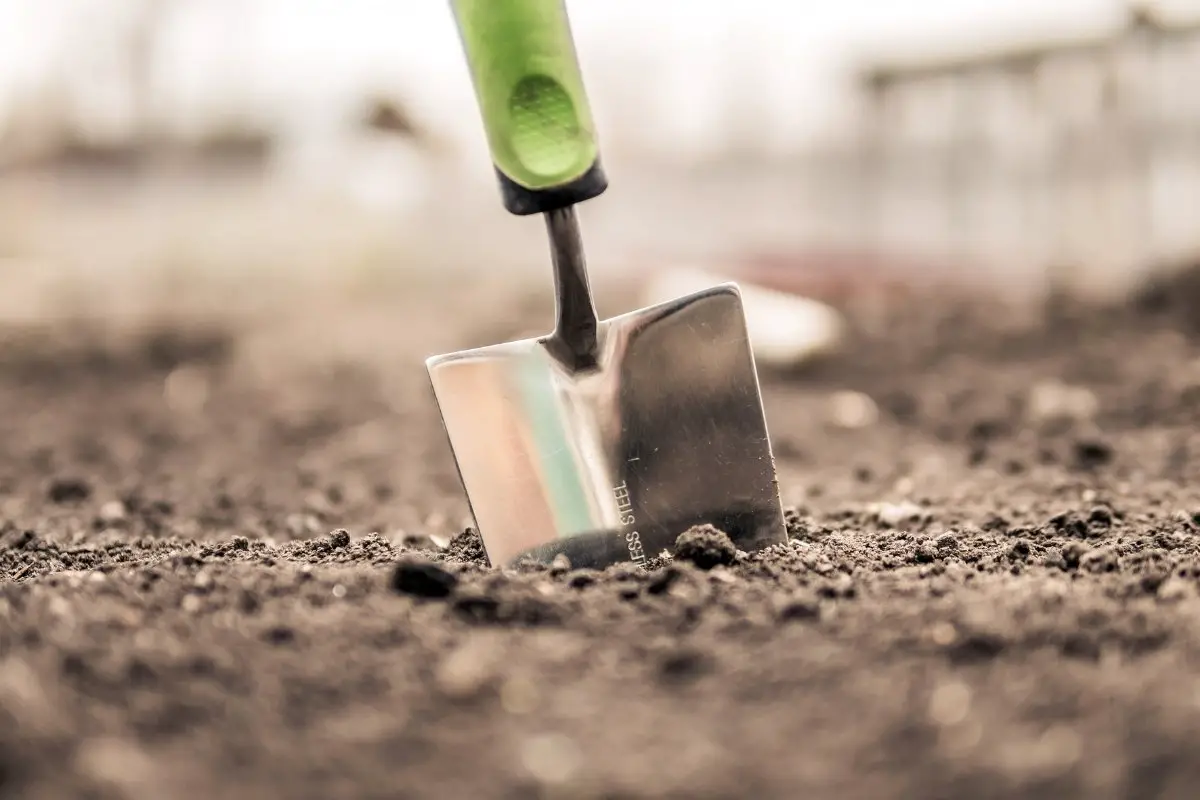Last Updated on February 16, 2022 by Cristina
As you dive deeper into the gardening world, you’ll come across questions like is soil a heterogeneous mixture or homogeneous. Soil is an essential part of a successful planting and a valuable resource to all of us. It’s what can make or break your garden.
Is soil a heterogeneous mixture? The short answer is yes, soil is made from several ingredients that affect its physical characteristics. Follow us on the journey to find out what soil is made of and what types are there.
What Is Soil?
Soil is the most important natural resource that covers most of the ground. It’s a mixture of living and dead organisms that interact and create the ideal environment for most plants. It’s made from several layers, each with a valuable contribution to the final form.
But soil changes throughout the years. The current state and composition depend on the degree of weathering it’s been through.

There is a fair share of aquatic plants, but most trees, fruits, vegetables, and flowers require soil to grow. The soil’s quality varies by location, treatment, and composition.
When looking for an answer is soil a heterogeneous mixture remember that different soil types are suitable for different plants. While some soil is perfect even if more homogeneous, others need improvement by fertilizing.
Read more about Native Italian Flowers
Physical Characteristics Of Soil
The physical characteristics of the soil are easy to notice once you engage your senses. It’s the main giveaway and answer to is soil a heterogeneous mixture? Here are the main aspects that separate one type of soil from another.
Structure
The structure comes from all the tiny particles that create the soil. These could be sand, clay, gravel, silt, and organic matter clumped in peds.
The peds can be small granules or larger clumps. The space between these granules is filled with air, allowing water and microorganisms to penetrate deeper. This determines the porosity of the soil.
Some types of soil are naturally well structured. Weather conditions like soil freezing often have a significant role in the final structure.
The structure of the soil determines its use. For example, sandy soil that can’t hold water and nutrients is unsuitable for a veggie garden, but it’s great for planting succulents.
On the other hand, muddy soil with too much water is not ideal for crops that thrive in a drier environment.
Texture
The solid components in the soil form its texture. One look at the texture will answer is soil a heterogeneous mixture. Most soils are a combination of three main textures: slit, clay and sand.
There are soils made from a single texture, but they’re less common and not practical.
Check Out Self Watering Planter Benefits
Color
Several factors dictate the soil’s color: the mineral content, the amount of organic matter, weathering, and drainage degree.
Lighter soil has poor quality and is less fertile, while darker soil is more beneficial. Gray soil with blue hues is inclined to waterlogging and has poor drainage.
Conversely, dark soil or even black has a high organic matter content.
Soil Heterogeneity
So, is soil a heterogeneous mixture? Soil is a heterogeneous mixture, which means the particles throughout are not uniform. Instead, it’s a mix of a few solid components that can never melt into each other and be homogeneous.
What is soil homogeneous and heterogeneous? In heterogeneous mixtures, the ingredients can be separated physically. But with homogeneous mixtures, you need to involve a chemical process to separate the ingredients.
Burpee, 9 Quarts | Premium Organic Potting Natural Soil Mix Food
Why is soil a heterogeneous mixture? The soil is made from several layers called horizons. The bottom layer is the bedrock, and right above is the parent material.
The upper horizons subsoil, topsoil, and organic, developed from the parent material.
The parent material can be weathered bedrock, alluvium, local outwash deposit, eolian sand, till, etc. It’s usually a loose, unweathered material from which soil forms.
Click here to Learn How To Make Lucky Bamboo Grow More Branches
Geological Vs Pedological Heterogeneity
We can’t answer is soil a heterogeneous mixture without focusing on the types of heterogeneity. It can be geological or pedological. In simple terms, a soil can inherit its heterogeneity or acquire it over time.
Inherited or geologic heterogeneity comes from heterogeneous parent material or several parent materials.
Pedological or acquired heterogeneity happens when the parent material undergoes a transformation process.
Even if the parent material is homogenous, it can become heterogeneous with time. This depends on the location. In stable regions, a soil’s heterogeneity doesn’t change for decades.
Soil Is A Mixture Of 4 Ingredients
We answered the burning question is soil a heterogeneous mixture, but what makes it heterogeneous? It’s made of 4 main components which work well with each other and provide plants with all they need.

Organic Matter
The organic matter in soil can be living or dead organisms. It’s what binds all the particles together. It makes up less than 10% of the soil, but it’s the richest part that provides nutrients and retains moisture.
Death organic mater includes decomposed leaves, plants, dead animals. The live organic matter is microbial bacteria, fungi, algae, living earthworms, and plant roots.
Minerals
The common minerals you can find in soil are iron, aluminum, and silicon. Besides the iron, most of the other minerals don’t satisfy the plant’s needs since they’re only trace amounts.
Water
The water content in the soil depends on the soil’s texture. Once the water comes in touch with the soil, gravity pushes it downwards.
Soil with larger particles, like sand, has a hard time retaining water, as it moves quickly in the space between each particle. Conversely, clay retains a lot of moisture since it has microscopic particles.
Air
You can determine the amount of air by comparing the solid volume of the soil with the nonsolid volume. This ratio is called the porosity of the soil.
The texture of the soil determines the amount of air and its free movement. Roots require oxygen too, so the ideal soil has the perfect surface to allow free air movement.

Bottom Line: Is Soil A Heterogeneous Mixture?
Greek philosophers claimed that 4 elements compromise the universe; fire, earth, air, and water. So is soil a heterogeneous mixture like the other elements? No, all soils are heterogeneous.
No matter what type of land you’re working on, as a beginner, it’s natural to wonder, is soil a heterogeneous mixture. Some soils can look so uniform that it’s easy to think they’re made from a single component; take clay, for example!
But soil is more complex, a mixture of life-giving elements.
FAQ’s
Why is soil a heterogeneous mixture?
Soil is heterogeneous because it's a mix of 4 components; organic matter, minerals, water, and air. All elements are visible and can be separated physically, making it a heterogeneous mixture.
What is soil homogeneous and heterogeneous?
Homogeneous are maters made out of a single or several ingredients that you can't separate physically. For example, the air is a homogeneous mixture because it looks uniform, and we can't physically separate the oxygen, nitrogen, carbon dioxide, and argon.
On the other hand, heterogeneous mixtures are not uniform; you can clearly see the different elements and physically separate them.
Mary is a passionate gardener who loves spending her days getting her hands dirty and nurturing her plants. She‘s an avid reader of gardening magazines and is always looking for new ways to make her garden thrive. When not outside tending to her plants, Mary can be found inside reading up on the latest gardening trends, comparing notes with fellow gardeners, and finding the perfect pottery planter for her next planting project.


